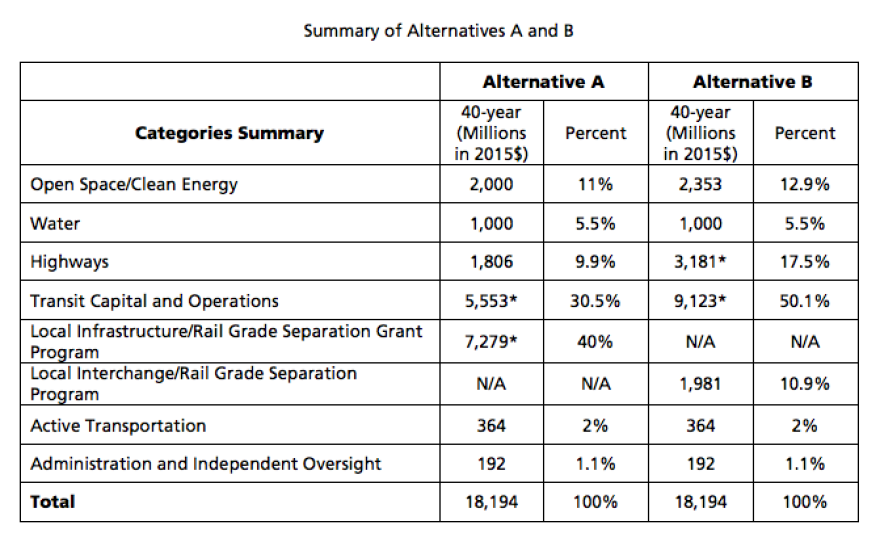The San Diego Association of Governments on Friday came forward with two draft proposals on how to spend money from a "quality of life" tax that may go before San Diego County voters in November.
The two proposals differed significantly in their balance of funding for public transit, highways and local streets and roads. The first would dedicate 40 percent of revenue to local infrastructure projects, which would be selected by city governments, and 30.5 percent to public transit. The second would put a greater emphasis on regional, inter-city transportation, giving 17.5 percent of revenue to highways and 50.1 percent to public transit.

Staffers also presented the results of their public outreach campaign, which included four telephone town halls and an online survey.
The SANDAG board, which is made up of elected officials from San Diego County and some of its 18 cities, took no action on the plans. Staffers will refine their proposals based on feedback from board members and the public and present them again at a future meeting.
A coalition of 20 progressive and environmental groups presented the SANDAG board with its own vision for the tax money, which puts a high priority on walking and biking projects, public transit and transit-oriented development. Many of the same organizations sharply criticized SANDAG's multi-decade regional transportation plan passed in October for putting too much emphasis on cars.
"We want to find a solution, we want to work with you," Nicole Capretz, executive director of the Climate Action Campaign, told board members. "We will support this measure, but only if it supports this vision."
Several board members said their constituents depend on the region's highways, streets and roads, and expressed hesitation at not giving them enough funding — especially because any sales tax increase will need the approval of two-thirds of county voters.
"That hurdle is huge," said San Marcos Mayor Jim Desmond. "We’re going to have to sell this thing, if we decide we want to move forward in a certain direction.”






